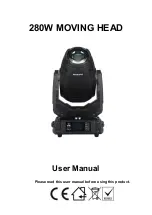
Centrifuge GT 2/2R
Maintenance and Care | 17
Maintenance and Care
Cleaning Intervals
For the sake of personal, environmental, and material
protection, it is your duty to clean and if necessary disinfect
the centrifuge on a regular basis.
Cleaning
When cleaning centrifuge:
•
Use warm water with a neutral solvent.
•
Never use caustic cleaning agents such as soap suds,
phosphoric acid, bleaching solutions or scrubbing
powder.
•
Rinse the cavities out thoroughly.
•
Use a soft brush without metal bristles to remove
stubborn residue.
•
Afterwards rinse with distilled water.
•
Place the rotors on a plastic grate with their cavities
pointing down.
•
If drying boxes are used, the temperature must never
exceed 50 °C, since higher temperatures could damage
the material and shorten the lifetime of the parts.
•
Use only disinfectants with a pH of 6-8.
•
Dry aluminum parts off with a soft cloth.
•
After cleaning, treat the entire surface of aluminum parts
with corrosion protection oil (70009824). Also treat the
cavities with oil.
•
Store the aluminum parts at room temperature or in a
cold-storage room with the cavities pointing down.
Clean centrifuge and accessories as follows:
1. Open the centrifuge.
2. Turn off the centrifuge.
3. Pull out the power supply plug.
4. Grasp the rotor with both hands and lift it vertically off the
centrifuge spindle.
5. Remove the centrifuge tubes and adapters.
6. Use a neutral cleaning agent with a pH value between 6
and 8 for cleaning.
7. Dry all of the rotors and accessories after cleaning with a
cloth or in a warm air cabinet at a maximum temperature
of 50 °C.
•
After cleaning, treat the entire surface of aluminum parts
with corrosion protection oil (70009824). Also treat the
cavities with oil.
•
Tread the bold of the swing out rotor with bold grease
(75003786).
After some applications their might be ice in the rotor
chamber. Let the ice melt and drain it off. Clean the rotor
chamber as described above.
Maintenance
Recommended interval
Clean rotor chamber
Daily or when polluted
Clean rotor
Daily or when polluted
Accessories
Daily or when polluted
Cabinet
Once per month
Ventilation holes
Every six months
CAUTION:
Refrain from using any other
cleaning or decontamination procedure than
those recommended here, if you are not
entirely sure that the intended procedure is
safe for the equipment.
Use only approved cleansers.
If in doubt, contact Fisher Scientific.
CAUTION:
Before using any cleaning or
decontamination methods except those
recommended by the manufacturer, users
should check with the manufacturer that the
proposed method will not damage the
equipment.
CAUTION:
When cleaning, do not allow
liquids, especially organic solvents, to get on
the drive shaft or the bearings of the centrifuge.
Organic solvents break down the grease in the
motor bearing. The drive shaft could freeze up.
















































